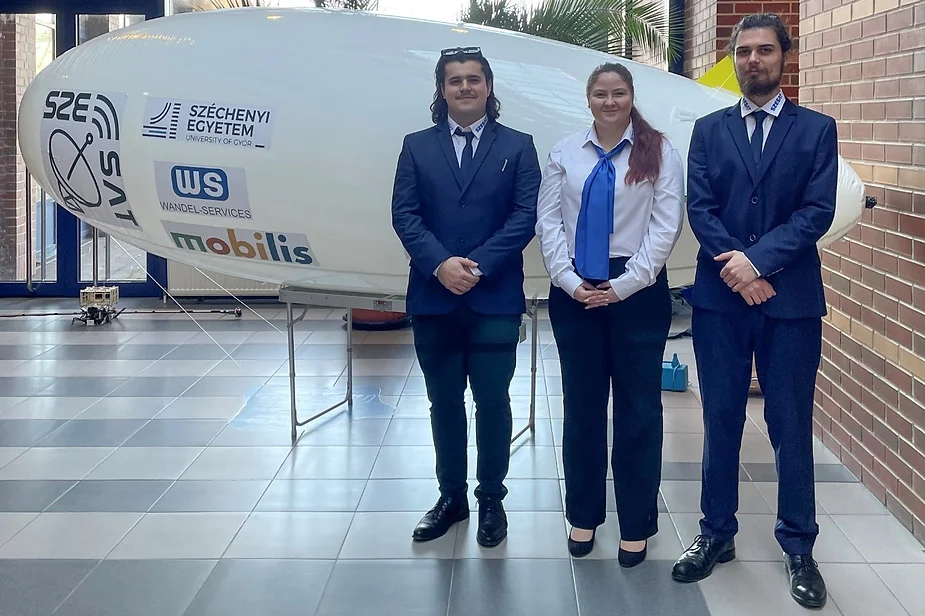SZEppelin: SZE’s student team won national success at the telecommunications competition
SZEppelin, the student team representing Széchenyi István University and its SZESAT Interdisciplinary Specialized College, won first place in the Lajos Nagy University Telecommunications Construction Memorial Competition. The young people have designed a carbon-neutral measuring airship to modernise the measurements of mobile telecommunications companies and increase cost-efficiency.
For the first time, Metalcom Telecommunications and System Integration Ltd. announced its national university construction competition, the Lajos Nagy Memorial Competition, in cooperation with the Department of Broadband Infocommunications and Electromagnetic Theory of the Budapest University of Technology and Economics (BME).
The two-round competition, open to teams of two or three, started with the elaboration of a project work. The theme was to create hardware or software that could solve a current challenge or create a future-oriented, niche solution using telecommunication technologies. The teams had to implement the invention in their entry project work and present it to the jury by the final.
In line with the telecommunications and technical traditions of Széchenyi István University, SZEppelin from Győr implemented an innovative solution that proved to be the best and won first place.

Members of the team, Péter Béres, Kornélia Csonták and Martin Magyar with the indoor airship. (Photo: Dóra Jankovics)
"Teams had to get from an idea to the implementation during the competition. We have had the aim to modernise the measurement and increase the cost-efficiency of mobile telecommunications companies. To do this, we created a carbon-neutral measuring airship, first indoors, but by the finals of the competition, we also had a laser-cut nacelle for our new 24-cubic-metre outdoor airship. With this airship to be built, it will be possible to measure the strength of the signal in agricultural areas and along national borders - not only the coverage of mobile networks, but also air pollution", Péter Béres, the head of the airship construction section of the SZESAT specialized college at Széchenyi István University said.
In the final, held at BME in February, the other finalist teams gave presentations on missile technology, drone defence and thunderstorm and lightning forecasting. The students of Széchenyi University were the last to face the jury, and not only impressed the judges with their comprehensive presentation, but also showed off the airship itself.
"We are very happy with the result and extremely proud of the team's performance. This is the fruit not only of the work of the three of us, but also of each and every one of our fellow SZESAT members who put their energy and expertise into the development. The jury asked a lot of questions about the economic viability and return on investment of the airship, as well as the legal rules that apply. That is why it's good that we are an interdisciplinary specialized college because not only electrical, automotive and mechanical engineers work together on a project, but also lawyers, logisticians and communication professionals", Kornélia Csonták, the junior director of SZESAT explained.
SZEppelin plans to carry out regular measurements with the airship in 2025, and SZESAT will target the Earth's thermosphere this year, in addition to the stratosphere.











